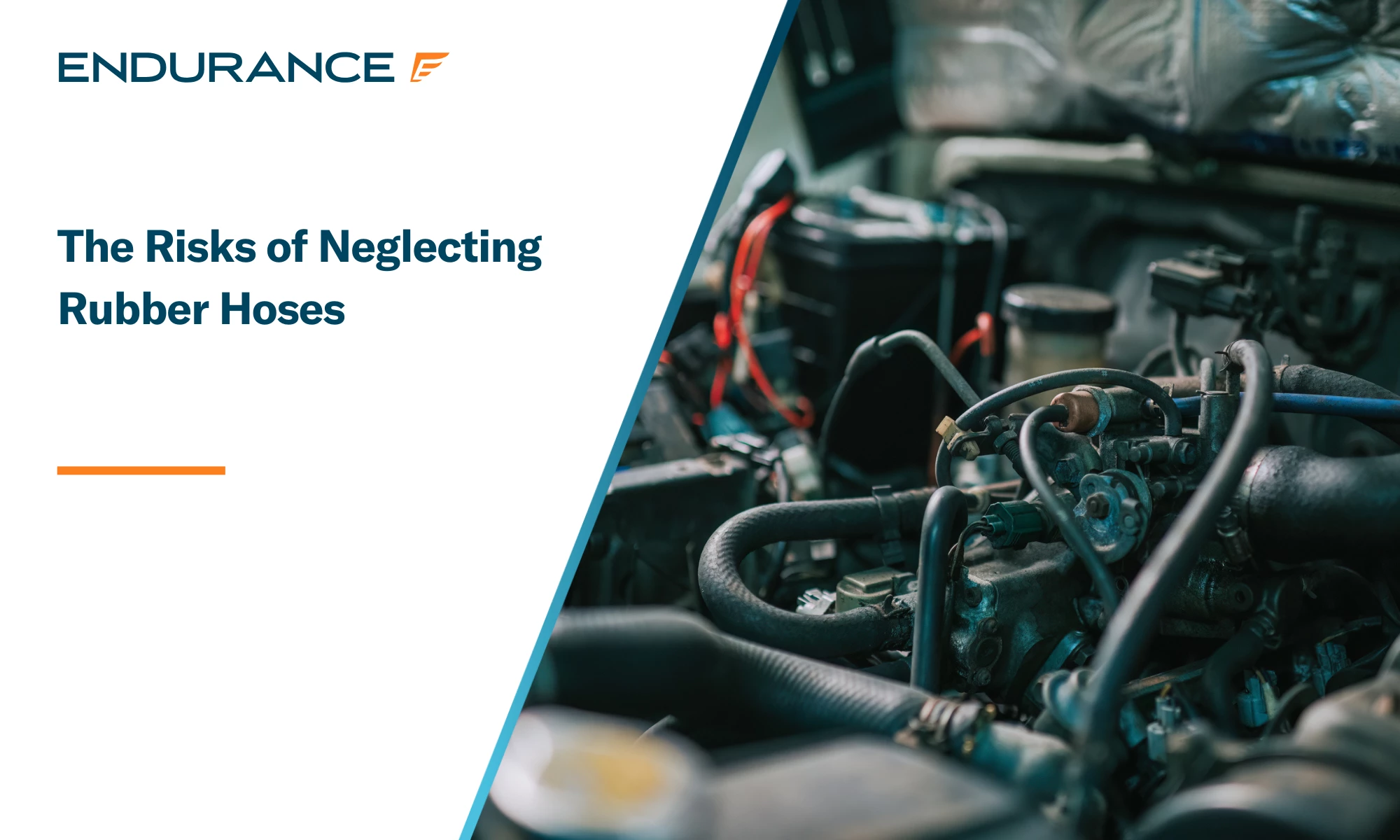Get this deal! Call now.
Speak with a vehicle protection plan specialist and get $300 off any new contract instantly.
Call 866-678-4172
or scan the code below


Your car is a complex machine with many critical components working together to keep you safely on the road. While major parts like the engine and transmission often get the most attention, smaller yet essential elements, like rubber hoses, play a crucial role in your vehicle’s overall performance. These hoses carry vital fluids such as coolant, fuel, and brake fluid, ensuring that your car operates smoothly and efficiently.
Despite their importance, rubber hoses are often overlooked in routine automotive maintenance. Many drivers don’t think about them until a failure occurs, which can lead to severe consequences like engine overheating, brake failure, or even fire hazards. Understanding the different types of hoses in your vehicle, recognizing the signs of wear, and knowing how to maintain them can prevent costly repairs and unexpected breakdowns.
Your car relies on several types of rubber hoses, each serving a unique function. The most common ones include radiator hoses, fuel hoses, brake hoses, heater hoses, and vacuum hoses.
Since rubber hoses are subjected to extreme conditions under the hood, they naturally degrade over time. Recognizing the early warning signs of a failing hose can save you from expensive repairs or risky driving conditions.
One of the most common indicators of hose deterioration is visible cracks or splits along the surface. These usually occur due to heat exposure, pressure fluctuations, or simply aging. Another sign is bulging or blistering, which suggests that the hose’s internal structure is weakening. This can lead to sudden ruptures, causing coolant leaks or fuel leaks.
The texture of a hose also provides clues about its condition. A hose should be firm yet flexible. If it feels excessively soft or brittle, it’s likely near the end of its lifespan. Additionally, if you notice fluid leaks under your car, it could be due to a cracked or loose hose. Pay attention to any unusual smells, as leaking coolant or fuel often emits a noticeable odor.
Another warning sign is inconsistent engine performance. A vacuum hose leak, for instance, can lead to misfiring, stalling, or poor fuel efficiency. Similarly, if your temperature gauge rises quickly or your brakes feel spongy, a failing hose could be the culprit.
Ignoring a failing rubber hose can have severe consequences. A small crack or leak may not seem like an urgent problem, but it can quickly escalate into a major failure. For example, a radiator hose that leaks coolant can lead to engine overheating. If an engine runs too hot for too long, it can cause head gasket failure, warped cylinders, or even a complete engine breakdown, resulting in thousands of dollars in repairs.
Brake hose failures are even more dangerous. If a brake hose leaks fluid, your car’s braking power is significantly reduced. In extreme cases, you might experience total brake failure, putting yourself and others in danger. Similarly, a fuel hose leak not only reduces engine efficiency but also creates a fire hazard.
Another issue that is often overlooked is the effect of vacuum hose leaks on engine performance. A seemingly minor vacuum leak can lead to erratic idling, reduced acceleration, and increased emissions, potentially causing your car to fail an emissions test.
By the time a hose failure becomes obvious, the damage may already be extensive. That’s why proactive maintenance is key to avoiding any issues (and the resulting financial implications).
Routine inspections are the best way to prevent hose-related issues. Checking your car’s hoses regularly, especially before long trips, can save you from trouble out on the road. Start by visually assessing each hose for cracks, splits, or bulging. Run your hand along the hose to check for soft spots or excessive hardness. If a hose feels unusually stiff or squishy, it should be replaced.
It’s also important to check hose connections. Loose hose clamps or corroded fittings can lead to leaks, even if the hose itself is in good shape. Additionally, make sure there are no kinks or bends that could restrict fluid flow.
Keeping hoses clean can also extend their lifespan. Dirt, grease, and engine oil can weaken rubber over time. Wipe down hoses periodically and avoid spilling fluids on them during oil changes or other maintenance tasks.
Finally, follow your car manufacturer’s maintenance schedule. Some hoses, like brake hoses, may need to be replaced after a certain number of miles or years, even if they don’t show visible damage.
Despite your best efforts, hoses can still wear out unexpectedly, and repairs can be expensive, especially if a failure leads to engine damage or brake issues. That’s where an extended auto warranty can be invaluable.
Endurance offers comprehensive auto protection plans that cover essential automotive components, including the cooling system, fuel system, and braking system. With an extended warranty in place, you can drive with confidence, knowing that any costly repairs covered by your protection plan won’t leave you financially strained. If you ever experience a sudden hose failure, an Endurance program can help cover the cost of parts and labor directly with the repair shop, ensuring you get back on the road quickly and safely.
As well as market-leading coverage, Endurance customers also enjoy some seriously useful benefits. Sign up today and get instant access to 24/7 roadside assistance (including towing, fuel delivery, and lockout services), rental car reimbursement, and trip interruption coverage as standard. You can also unlock a year’s worth of our Elite Benefits, which grants you tire repair and replacement, collision discounts, key fob replacement, and more.
By staying proactive with hose maintenance and securing the right coverage, you can protect your vehicle from unexpected issues while keeping repair costs manageable. If you’re looking for a way to safeguard your car from costly breakdowns, you’ll find something to suit your needs and budget in our range of vehicle service contracts.
Taking care of your car’s rubber hoses is a small but essential part of vehicle maintenance. By regularly inspecting and replacing worn hoses, you can prevent breakdowns on the side of the road, improve performance, and ensure your safety. However, unexpected failures can still happen. That’s why having the right protection matters!
With an extended warranty or vehicle service contract from Endurance, you can drive with confidence, knowing you’re covered when it counts. To find out more, get in touch with one of our plan advisors at (800) 253-8203 or shop online to see plans and pricing.
For other articles on DIY car maintenance, money saving, and more, we also have an extended warranty blog, so head on over and check it out.

We've received your vehicle information and will contact you shortly with your quote.
— OR —
Start shopping for a coverage plan now.

We're here to make sure you get the most comprehensive EV protection. That's why we've partnered with Xcelerate Auto to offer you transparent and dependable Tesla coverage.
Want us to contact you about XCare coverage for your Tesla?



Your protection is our top priority. Your quote is in progress and you will
receive a confirmation
email shortly.


Speak with a vehicle protection plan specialist and get $300 off any new contract instantly.

Call for $300 off any new plan!
By clicking the button, you consent to Endurance using automated technology to call, email, and text you using the contact info above, including your wireless number, if provided, regarding auto protection or, in California, mechanical breakdown insurance. You also agree to the Endurance Privacy Policy and Terms and Conditions. Consent is not a condition of purchase, and you can withdraw consent at any time. Message and data rates may apply.


Speak with a vehicle protection plan specialist and get $300 off any new contract instantly.
Call 866-678-4172
or scan the code below



Simply fill out the information below and we will follow up fast with your free no-obligation quote.
By clicking the button, you consent to Endurance using automated technology to call, email, and text you using the contact info above, including your wireless number, if provided, regarding auto protection or, in California, mechanical breakdown insurance. You also agree to the Endurance Privacy Policy and Terms and Conditions. Consent is not a condition of purchase, and you can withdraw consent at any time. Message and data rates may apply.

To speak to a vehicle protection plan specialist and get $300 off any new contract instantly
Scan the code below
Since the age of 16, Keith has been immersed in the automotive industry, beginning his career by helping his dad fix vehicles at a young age. Keith now owns his own family-run, ASE Certified repair shop, A+ Autocare. At his shop, he focuses on building trusting relationships with his community through exceptional customer service. Read more about Keith.